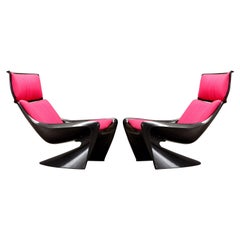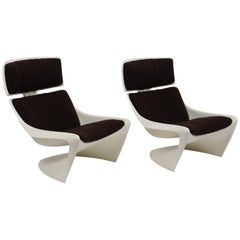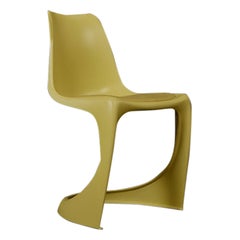Model 265 By Steen Ostergaard
Vintage 1960s German Space Age Lounge Chairs
Fabric, Fiberglass
Recent Sales
Vintage 1980s European Armchairs
Resin
2010s Danish Space Age Chairs
Textile, Plastic
2010s Danish Space Age Chairs
Textile, Plastic
2010s Danish Space Age Chairs
Fabric, Plastic
Vintage 1960s German Space Age Lounge Chairs
Fabric, Fiberglass
Vintage 1960s Danish Mid-Century Modern Lounge Chairs
Fiberglass, Leather
People Also Browsed
Mid-20th Century Italian Art Deco Night Stands
Brass
Vintage 1980s Canadian Post-Modern Stools
Metal
Vintage 1970s Italian Modern Sterling Silver
Gold, Sterling Silver, Enamel
2010s South African Modern Chairs
Steel
Mid-20th Century German Mid-Century Modern Flush Mount
Blown Glass
Antique 19th Century Austrian Vienna Secession Beds and Bed Frames
Bentwood
Mid-20th Century French Art Deco Patio and Garden Furniture
Stone, Wrought Iron
Vintage 1960s Italian Mid-Century Modern Beds and Bed Frames
Brass
Vintage 1970s French Coffee and Cocktail Tables
Brass
Vintage 1960s Italian Mid-Century Modern Vases
Aluminum
Vintage 1950s Scandinavian Modern Console Tables
Rosewood
Vintage 1960s French Mid-Century Modern Lounge Chairs
Polyester
Mid-20th Century Danish Scandinavian Modern Living Room Sets
Teak, Wool, Rattan
Antique 19th Century English Victorian Decorative Boxes
Brass, Silver, Vermeil
Antique 15th Century and Earlier German Decorative Art
Other
21st Century and Contemporary Italian Modern Bookcases
Metal, Nickel
Steen Ostergaard for sale on 1stDibs
Danish architect and industrial designer Steen Østergaard was decades ahead of his time with his futuristic Space Age designs. Through his innovative chairs, tables and other furniture, Østergaard elevated Scandinavian modern design during the mid-20th century.
Born in 1935, Østergaard studied furniture design and architecture at the School of Arts and Crafts in Copenhagen in 1957, graduating with honors in 1960. That same year, he won first prize in furniture design at the Danish Upholstery Guild’s annual awards, presented at Copenhagen’s Designmuseum Danmark.
From 1962 to 1965, Østergaard worked in the studio of revered furniture designer and architect Finn Juhl before establishing his own firm. Østergaard’s watershed moment came in 1968 when he created the iconic Cado 290 chair. Later produced in 1970 by Danish designer Poul Cadovius’s Cado company, the chair — a brilliant one-piece work of polyamide nylon reinforced with fiberglass by way of injection-molding — features an elegant form inspired by the stackable seats created by Danish designer Verner Panton, who started experimenting with the concept of single-piece plastic chairs in the late 1950s. However, unlike the revolutionary Panton chair, Østergaard’s design includes optional cushions that can be affixed directly onto the chair’s frame.
Another of Østergaard’s exemplary seating pieces is the President Meteor lounge chair designed in 1968 as part of Cado’s A-Line collection. The indoor and outdoor chair was originally produced in six colors — beige, brown, green, white, red and blue — and incorporates a molded plastic frame with a deep, upholstered seat. The lounge chair appeared in the original Star Trek television series and film Star Trek II: The Wrath of Khan and was used at NASA’s Johnson Space Center in Houston, Texas.
Østergaard is also known for furnishings such as his molded plastic dining room chairs, patio and garden furniture and ergonomic club chairs. In 1981, he designed and constructed the first Action Recliner chair, which included a built-in footrest, a piece now replicated around the world.
Østergaard’s furniture has been featured in exhibitions throughout Europe and the United States, including at the Museum of Modern Art in New York, the Deutsches Museum in Munich and Designmuseum Danmark.
On 1stDibs, discover a range of vintage Steen Østergaard chairs and other furniture.
Materials: Plastic Furniture
Arguably the world’s most ubiquitous man-made material, plastic has impacted nearly every industry. In contemporary spaces, new and vintage plastic furniture is quite popular and its use pairs well with a range of design styles.
From the Italian lighting artisans at Fontana Arte to venturesome Scandinavian modernists such as Verner Panton, who created groundbreaking interiors as much as he did seating — see his revolutionary Panton chair — to contemporary multidisciplinary artists like Faye Toogood, furniture designers have been pushing the boundaries of plastic forever.
When The Graduate's Mr. McGuire proclaimed, “There’s a great future in plastics,” it was more than a laugh line. The iconic quote is an allusion both to society’s reliance on and its love affair with plastic. Before the material became an integral part of our lives — used in everything from clothing to storage to beauty and beyond — people relied on earthly elements for manufacturing, a process as time-consuming as it was costly.
Soon after American inventor John Wesley Hyatt created celluloid, which could mimic luxury products like tortoiseshell and ivory, production hit fever pitch, and the floodgates opened for others to explore plastic’s full potential. The material altered the history of design — mid-century modern legends Charles and Ray Eames, Joe Colombo and Eero Saarinen regularly experimented with plastics in the development of tables and chairs, and today plastic furnishings and decorative objects are seen as often indoors as they are outside.
Find vintage plastic lounge chairs, outdoor furniture, lighting and more on 1stDibs.
Finding the Right Seating for You
With entire areas of our homes reserved for “sitting rooms,” the value of quality antique and vintage seating cannot be overstated.
Fortunately, the design of side chairs, armchairs and other lounge furniture — since what were, quite literally, the early perches of our ancestors — has evolved considerably.
Among the earliest standard seating furniture were stools. Egyptian stools, for example, designed for one person with no seat back, were x-shaped and typically folded to be tucked away. These rudimentary chairs informed the design of Greek and Roman stools, all of which were a long way from Sori Yanagi's Butterfly stool or Alvar Aalto's Stool 60. In the 18th century and earlier, seats with backs and armrests were largely reserved for high nobility.
The seating of today is more inclusive but the style and placement of chairs can still make a statement. Antique desk chairs and armchairs designed in the style of Louis XV, which eventually included painted furniture and were often made of rare woods, feature prominently curved legs as well as Chinese themes and varied ornaments. Much like the thrones of fairy tales and the regency, elegant lounges crafted in the Louis XV style convey wealth and prestige. In the kitchen, the dining chair placed at the head of the table is typically reserved for the head of the household or a revered guest.
Of course, with luxurious vintage or antique furnishings, every chair can seem like the best seat in the house. Whether your preference is stretching out on a plush sofa, such as the Serpentine, designed by Vladimir Kagan, or cozying up in a vintage wingback chair, there is likely to be a comfy classic or contemporary gem for you on 1stDibs.
With respect to the latest obsessions in design, cane seating has been cropping up everywhere, from sleek armchairs to lounge chairs, while bouclé fabric, a staple of modern furniture design, can be seen in mid-century modern, Scandinavian modern and Hollywood Regency furniture styles.
Admirers of the sophisticated craftsmanship and dark woods frequently associated with mid-century modern seating can find timeless furnishings in our expansive collection of lounge chairs, dining chairs and other items — whether they’re vintage editions or alluring official reproductions of iconic designs from the likes of Hans Wegner or from Charles and Ray Eames. Shop our inventory of Egg chairs, designed in 1958 by Arne Jacobsen, the Florence Knoll lounge chair and more.
No matter your style, the collection of unique chairs, sofas and other seating on 1stDibs is surely worthy of a standing ovation.


